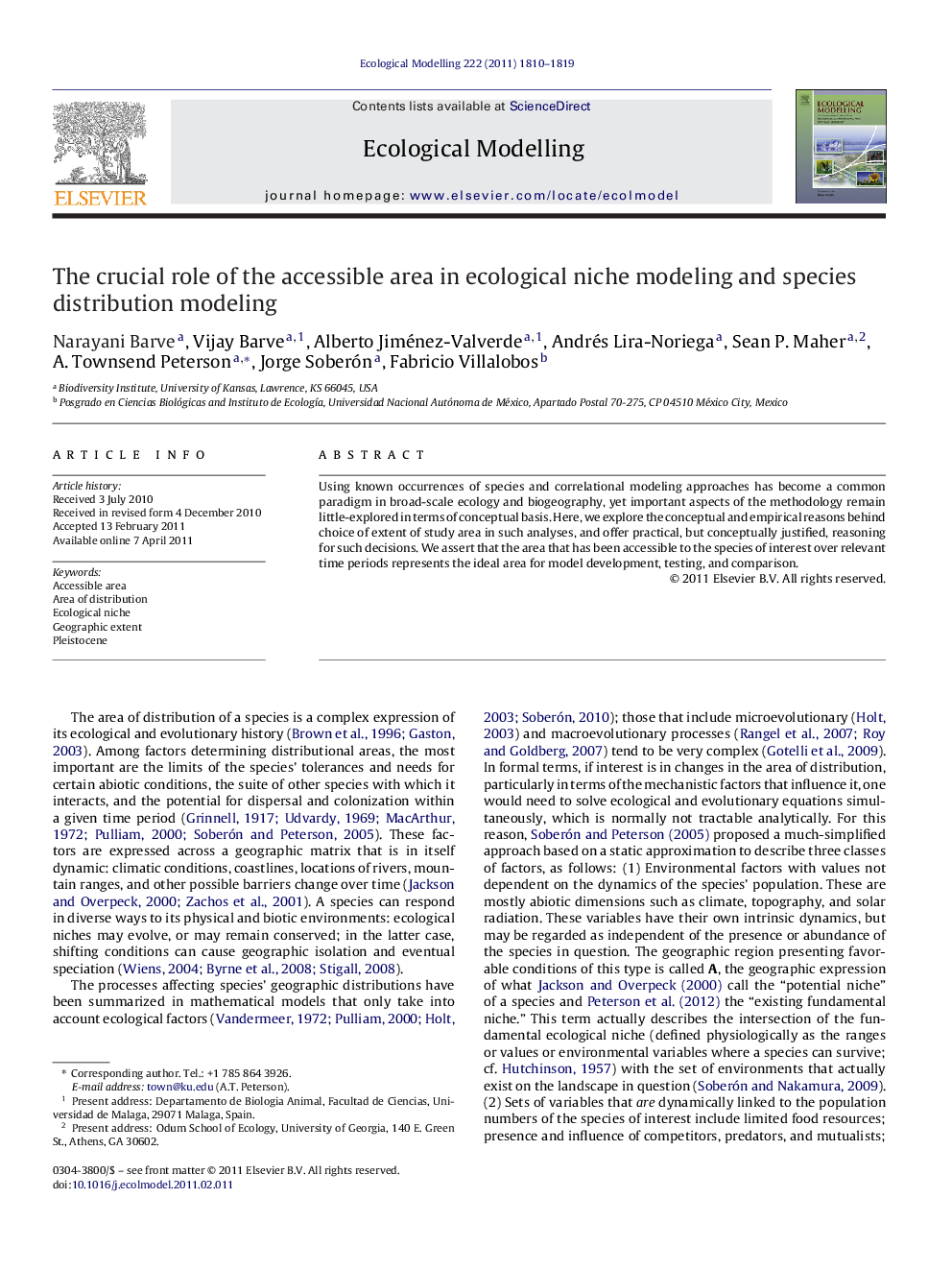| Article ID | Journal | Published Year | Pages | File Type |
|---|---|---|---|---|
| 4377042 | Ecological Modelling | 2011 | 10 Pages |
Using known occurrences of species and correlational modeling approaches has become a common paradigm in broad-scale ecology and biogeography, yet important aspects of the methodology remain little-explored in terms of conceptual basis. Here, we explore the conceptual and empirical reasons behind choice of extent of study area in such analyses, and offer practical, but conceptually justified, reasoning for such decisions. We assert that the area that has been accessible to the species of interest over relevant time periods represents the ideal area for model development, testing, and comparison.
► Use of ecological niche modeling approaches should be grounded in a clear conceptual framework for species’ environmental and geographic distributions. ► The set of areas accessible to the species over relevant periods of its history is termed “M”. ► M is a critical determinant to the outcome of model calibration, model evaluation, and model comparison. ► Estimating M is a complex challenge, and requires further research.
